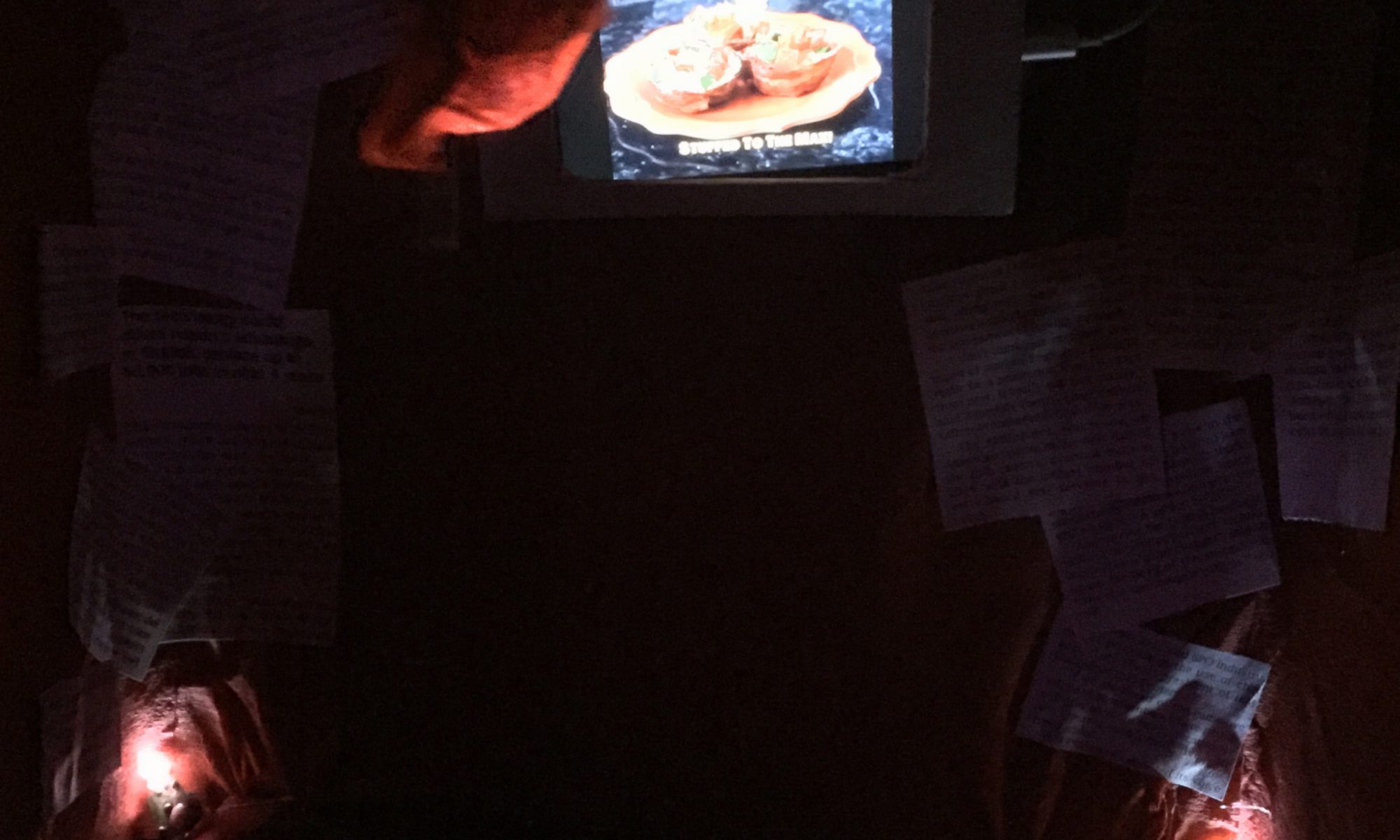Overview
For our very last 4D project, we were tasked to create an installation expressing a category of time. My final product was a continuation from the previous project’s concept on memory, but explores a different take on it, instead of interpreting it as it is.
Final

(Esther is not part of the installation)
CONCept
My final product is based on the concept of deja vu, where it serves as a visual and auditory installation conveying the feelings of experiencing deja vu.
Deja vu is a French term and means, literally, ‘already seen’. It is a ‘rather complex’ phenomenon and is defined as ‘a feeling of having already experienced the present situation’, with its fleeting and unpredictable nature making it difficult to study. Those who have experienced the feeling describe it as ‘an overwhelming sense of familiarity with something that shouldn’t be familiar at all’. It has also been said that ‘about two thirds of us experience at least one deja vu in our lifetime’.
The concept I chose to portray is based on an extraordinary case of deja vu, where a 23-year-old British man has been trapped in a bizarre deja vu time loop over a span of 8 years. Diagnosed with ‘severe deja vu’, and said to be the ‘first case to be triggered by anxiety’, the severity of his situation caused him to drop out of university, and he even stopped watching TV, listening to the radio, or reading the newspapers or magazines because he believed he had seen it all before, feeling as if he was ‘reliving the past moment by moment’.
SubjectS
I. Diorama
I thought this was a really peculiar case and would be interesting to expand on it further. I made a diorama and modelled it after his situation causing him to stop watching TV, listening to the radio, and reading the newspaper. The outside of the diorama resembles the exterior of an apartment. with a doorway and a peephole (the doorway is also supposed to emulate typical English-style apartments as the man is British).

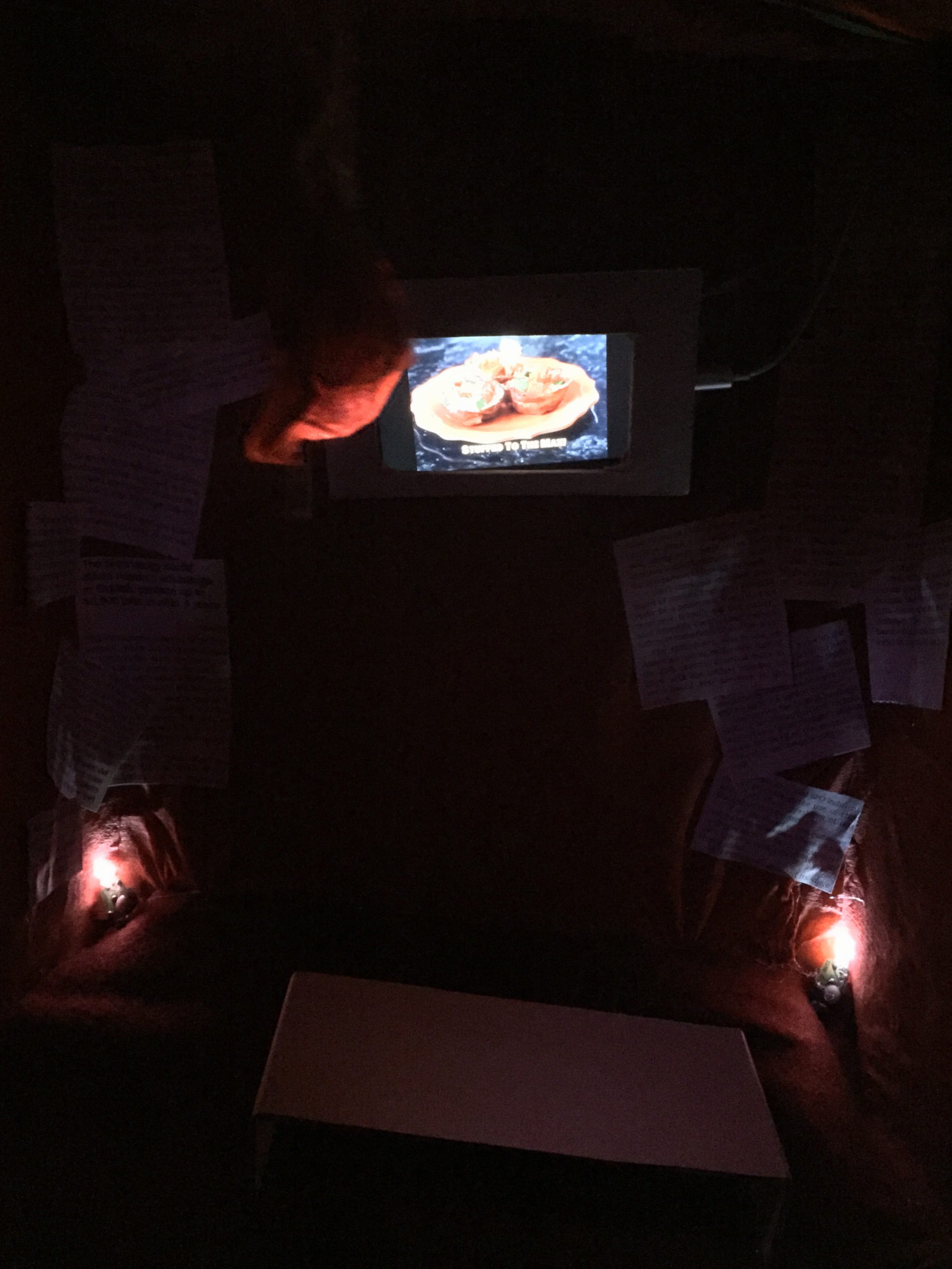
The inside of the diorama is modelled after a living room, with a TV, table, rug, and beanbags. However, there are repeated newspaper clippings pasted over the walls, and the walls of the room are red being lit up by red lights.
Video used in installation
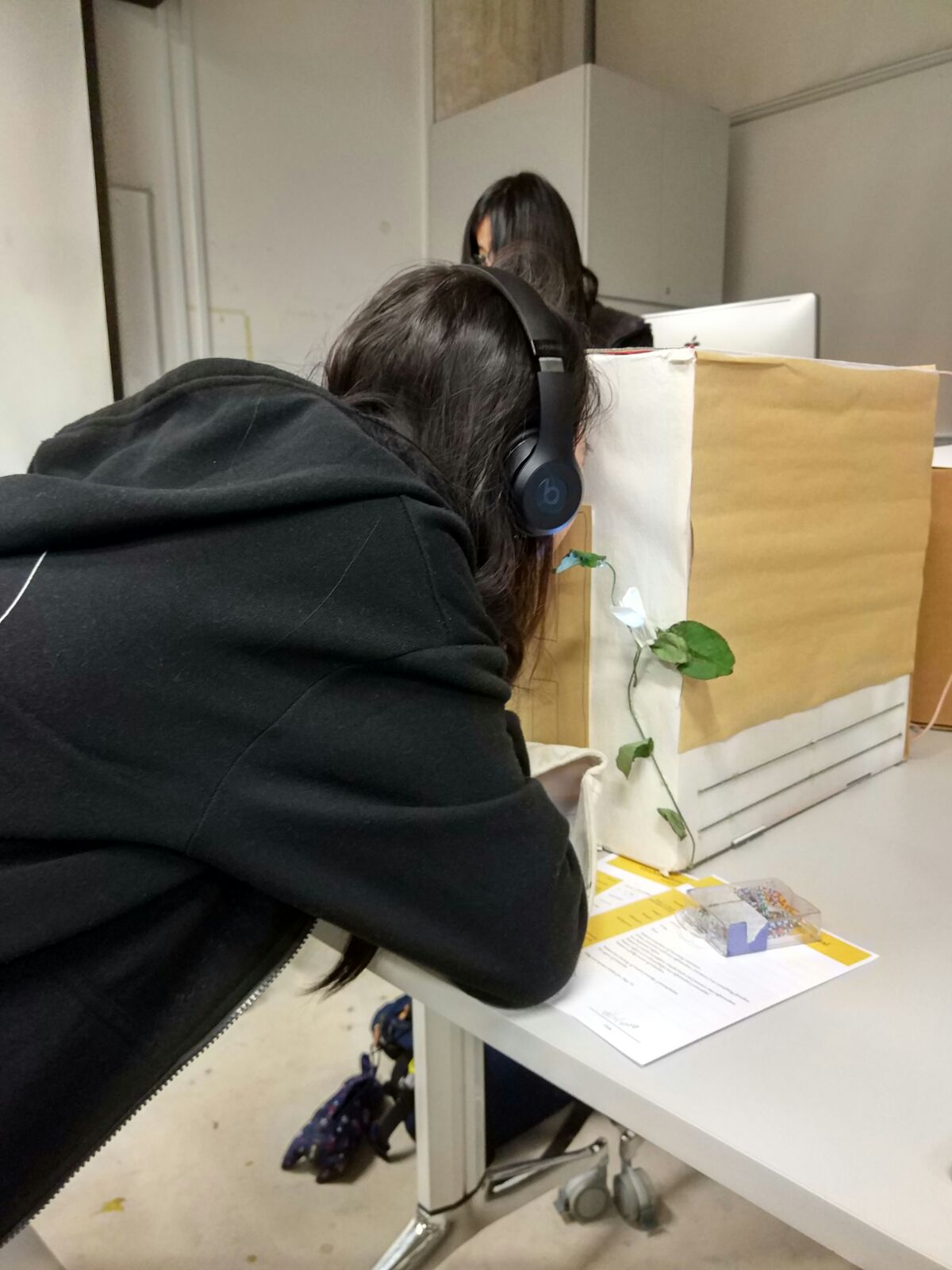
II. Sound Installation
And based on Lei’s advice, there is also a sound installation to accompany the diorama, consisting of ambient sounds in a linear form, conveying a narrative of the British man returning home then switching on his TV and radio only to hear it on loop, then growing frustrated from it.
The sounds used include:
| Birds chirping | Freesound.org |
| Cars driving pass | Freesound.org |
| Footsteps on concrete | Freesound.org |
| Keys jingling | Freesound.org |
| Door unlocking | Freesound.org |
| Sitting on couch | Freesound.org |
| Television switch | Freesound.org |
| Infomercial | YouTube |
| Man sighing | Freesound.org |
| News report on radio | Freesound.org |
| Footsteps indoors | Freesound.org |
| Doors creaking | Freesound.org |
| Doors slamming shut | Freesound.org |
III. Presentation Display

Additionally, to enhance the installation’s immersive factor, and to establish a sense of continuity, the concept of the installation is laid out in a form of a prescription medicine form. Based on the case of the man who has been experiencing constant deja vu for over 8 years, and how doctors and neurologists are baffled by his condition, I thought it would be appropriate and a more interesting and impressionable way to convey content in the form of a prescription medicine form.
Techniques applied
I. Rhythm
Rhythm is the regularised repeating of movement or sound, occurring when repetition is present.
The model shows a mixture of both regular and irregular rhythm in a visual and auditory sense. With regards to visuals, regular rhythm is shown in repeated motifs – the same newspaper clippings pasted on the wall and the infomercial played on loop. As for audio, regular rhythm is shown in the whole sound installation being on loop, as well as in the ambient noises themselves; the sound of footsteps, keys jingling, and the man sighing. This helped in establishing the environment as a roadside, followed by a room interior. Irregular rhythm, on the other hand, is mainly demonstrated in the sound installation. The regular rhythm of ambient noises is broken by the sudden shift in sounds such as the commercial being interrupted by the man sighing, the birds chirping and cars passing gradually shifting to the sound of footsteps and keys jingling (as it slowly gets louder).
The mixture of regular and irregular rhythm in this case helped me with conveying the intended concept. The repetitiveness of the regular rhythm being broken by the irregular rhythm at times helped in creating a sense of confusion for the viewers. Contrastingly, the regularity demonstrated in the constant looping of the infomercial and news report also contributed to the sense of confusion.
II. Movement
Movement is a shift or variation in the location of an object, light, or sound, making it an effective way to direct focus.
Movement, in this case, is demonstrated in the diorama through the shift in environment; where the box is decorated as an exterior of an apartment on the outside and when viewers look through the peephole, the environment changes to a interior (i.e. living room). As for the sound installation, movement is demonstrated in the change in focus, where there is a shift in environmental noises – the birds chirping and cars passing gradually changing to the footsteps of the man approaching, the sudden lowered pitch for the birds chirping signalling the shift from an external to internal environment. The variation in the sounds of the footsteps (indoor and footsteps on concrete), along with doors opening and closing, also gave the impression of the man entering and leaving the room.
The impression of movement, without the use of video, helped my installation in conveying the intended message through creating a more immersive experience in relaying the narrative, as well as reinforcing a sense of confusion. The irregular shifts from first-person to third-person (displayed in the peephole in the diorama being a third-person perspective, and the sound installation being a first-person perspective) also helped in reinforcing a sense of confusion.
III. Causality
Causality is the principle that everything has cause and effect.
The causality factor in the installation is demonstrated through the use of unexpectedness to establish a sense of tenseness and confusion. Unexpectedness in the diorama is reiterated in the contrast between its exterior and interior; the exterior is pleasantly-decorated with white and brown tones and flowers, while the walls of the interior is drenched in red with dramatic white and red lights. The texture of crepe paper used for the interior also helped in adding a ‘scratchy’ layer to the walls, adding to the overall sensation of tenseness. Furthermore, the living room does not look like a conventional living room, adding another layer of unexpectedness.
Unexpectedness is also demonstrated in the sound installation, especially with the variation in volume causing a shift in the third-person to first-person perspective. The ambient environmental noises in the beginning coupled with approaching footsteps established a third-person perspective, but by purposely increasing the pitch of the man’s noises, it sounded as though it is a first-person perspective, bringing about a sense of unexpectedness. On the other hand, expectedness was shown in the linear form of the sound installation where it followed a narrative.
IV. Duration
Duration is the overall length of time a work - or a portion of a work lasts.
The total duration of the project is about 2 minutes long, as dictated by the length of the entire sound installation. The diorama, on the other hand, is on constant loop, with the video inside being played on loop. Having the diorama on loop, coupled with a linear-style narrative, helped to add a layer of confusion to the whole installation, where there is a dissociation between the visual and auditory aspect. The varied durations between the visuals and audio also added an element of unexpectedness.
Research & Process
Dioramas
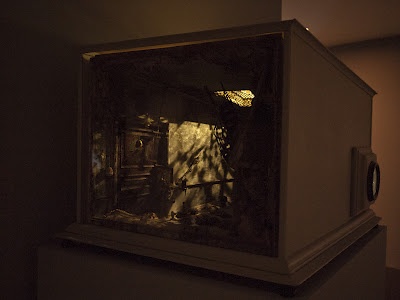


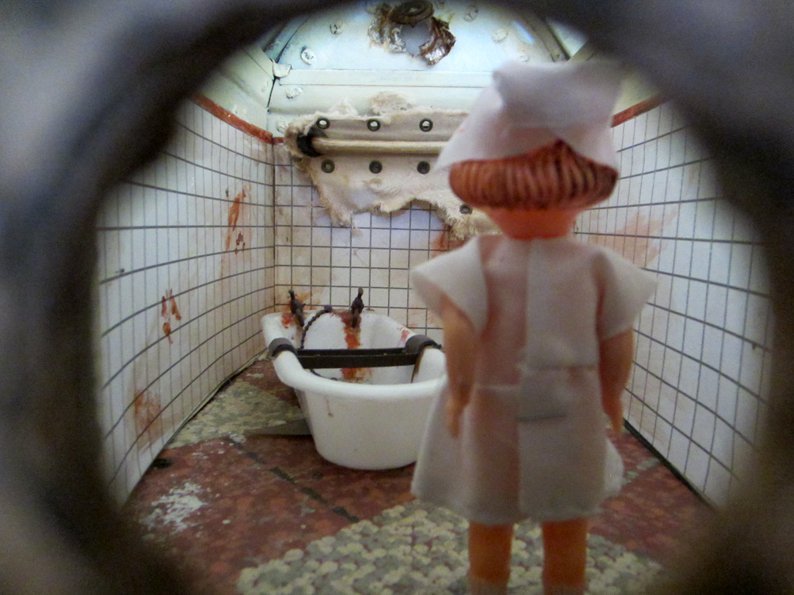
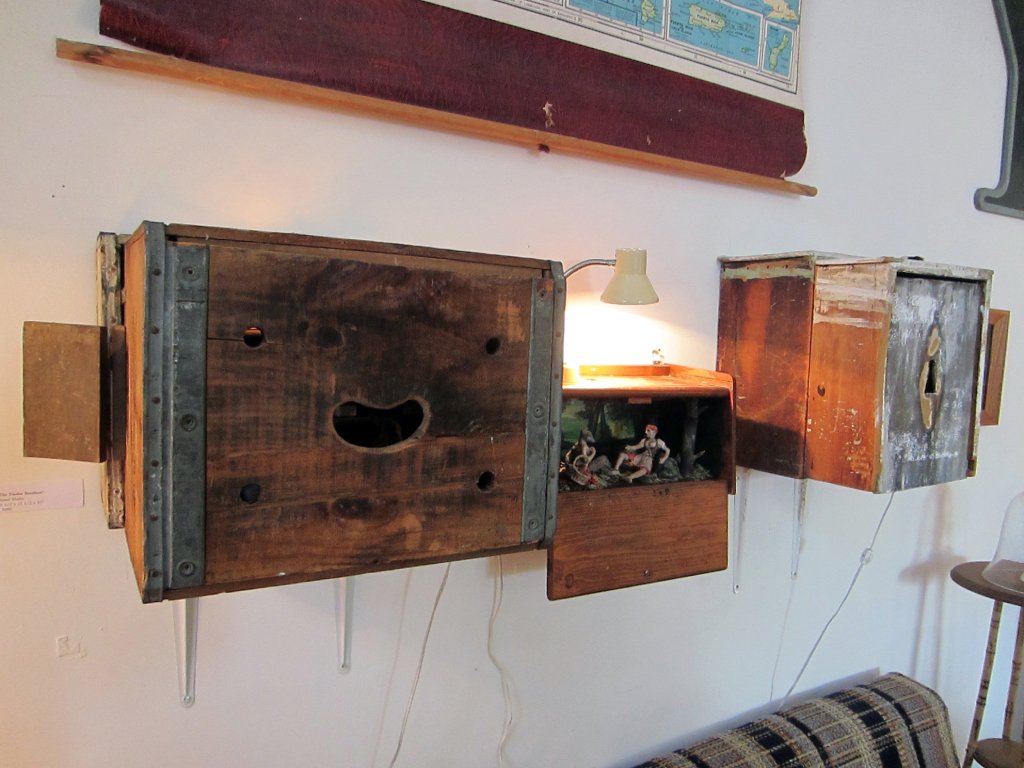
I was inspired by the dioramas made by the Brothers Quay and Tine Kinderman. I was also inspired by the following:
- Ideas in creating dioramas
- Establishing fourth wall through the use of peephole, and how it is able to add a layer of voyeuriitssm for viewers
- Using visuals to create tenseness and confusion
We see, We Hear, We Are
Please refer to https://oss.adm.ntu.edu.sg/vwong005/research-project-4-poetics-of-time/ for more information on this installation.
- Ideas of mixed media installation
- Inspiration for works occurring simultaneously (e.g. mix of video, still images, and sound)
Forever Bicycles

I was also inspired by the repetitive motifs used in Ai Weiwei’s Forever Bicycles. The repetitiveness of the artwork inspired me to use repetition to emulate time loops in the concept of deja vu.
Process
The conceptualising process included brainstorming for and performing the 10-second performance for one of the classes, and mind mapping.


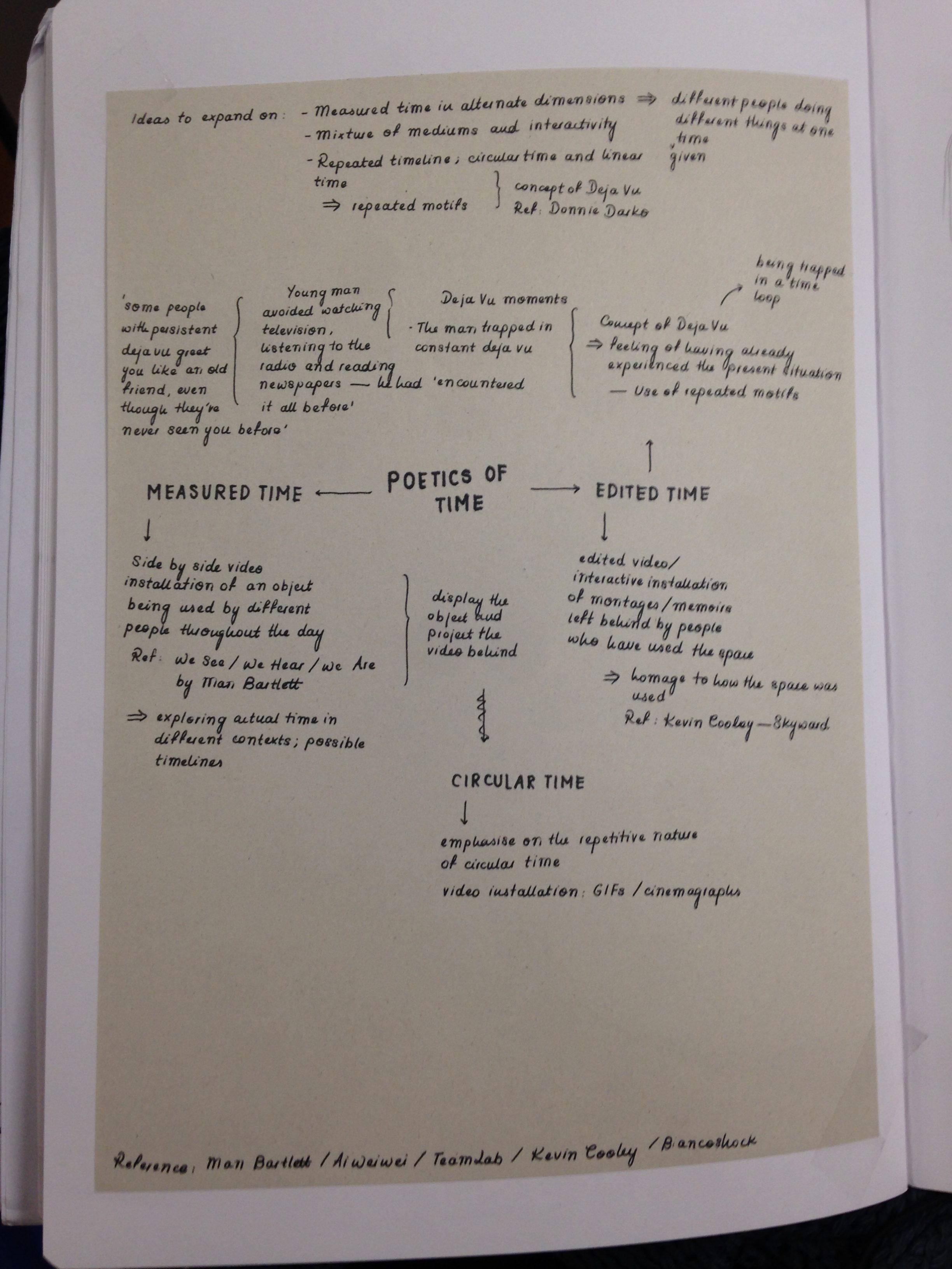
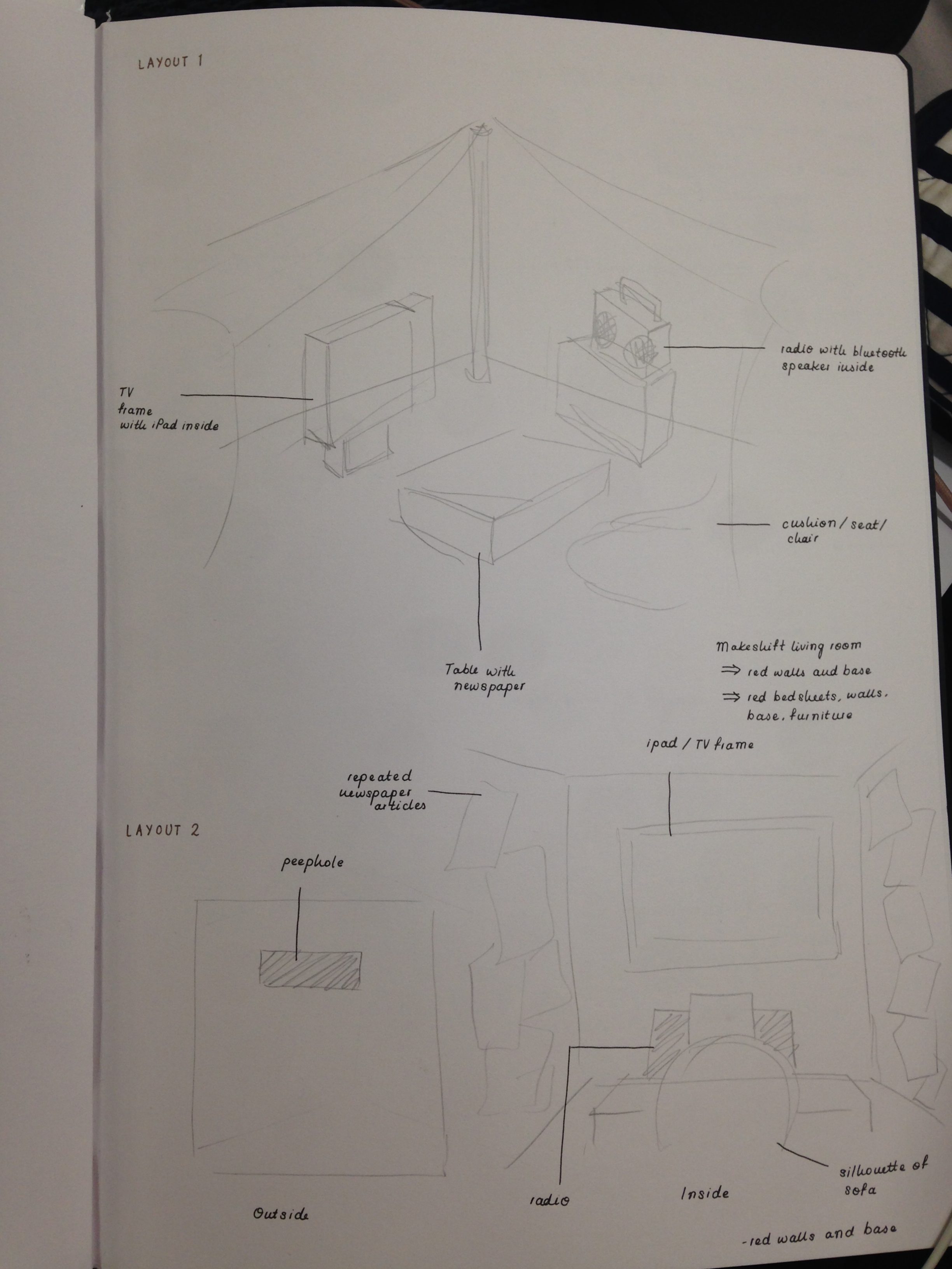

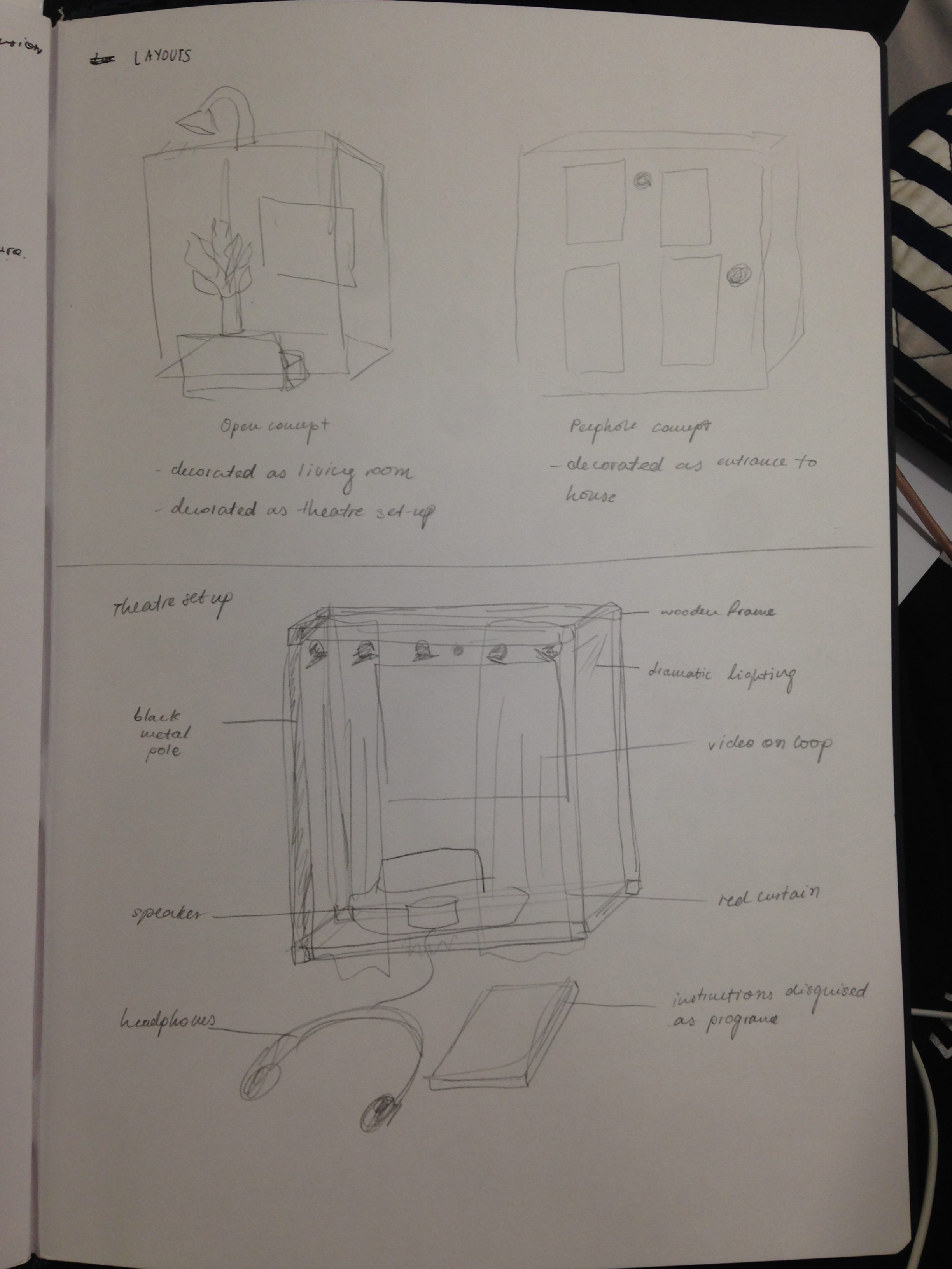
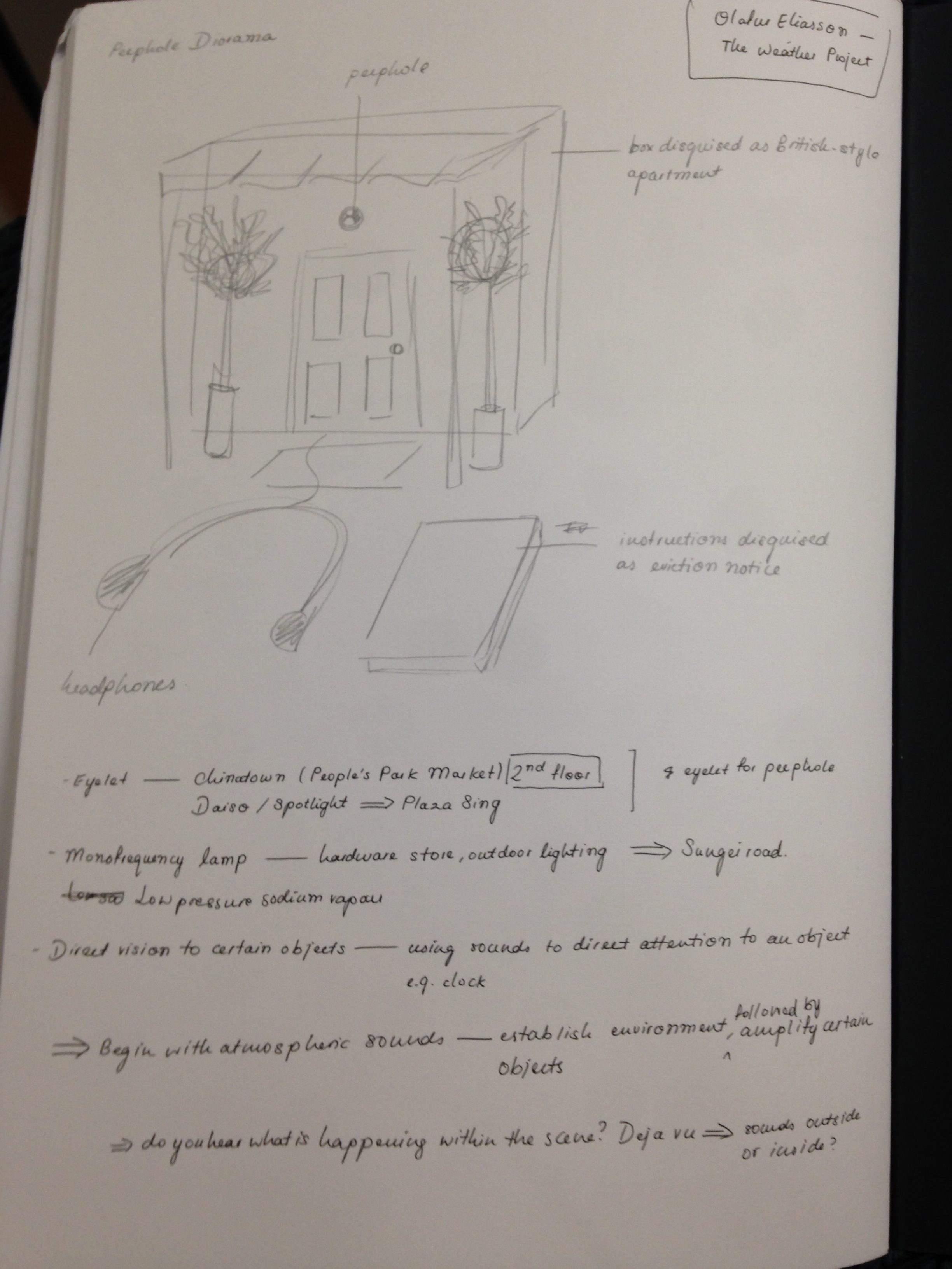
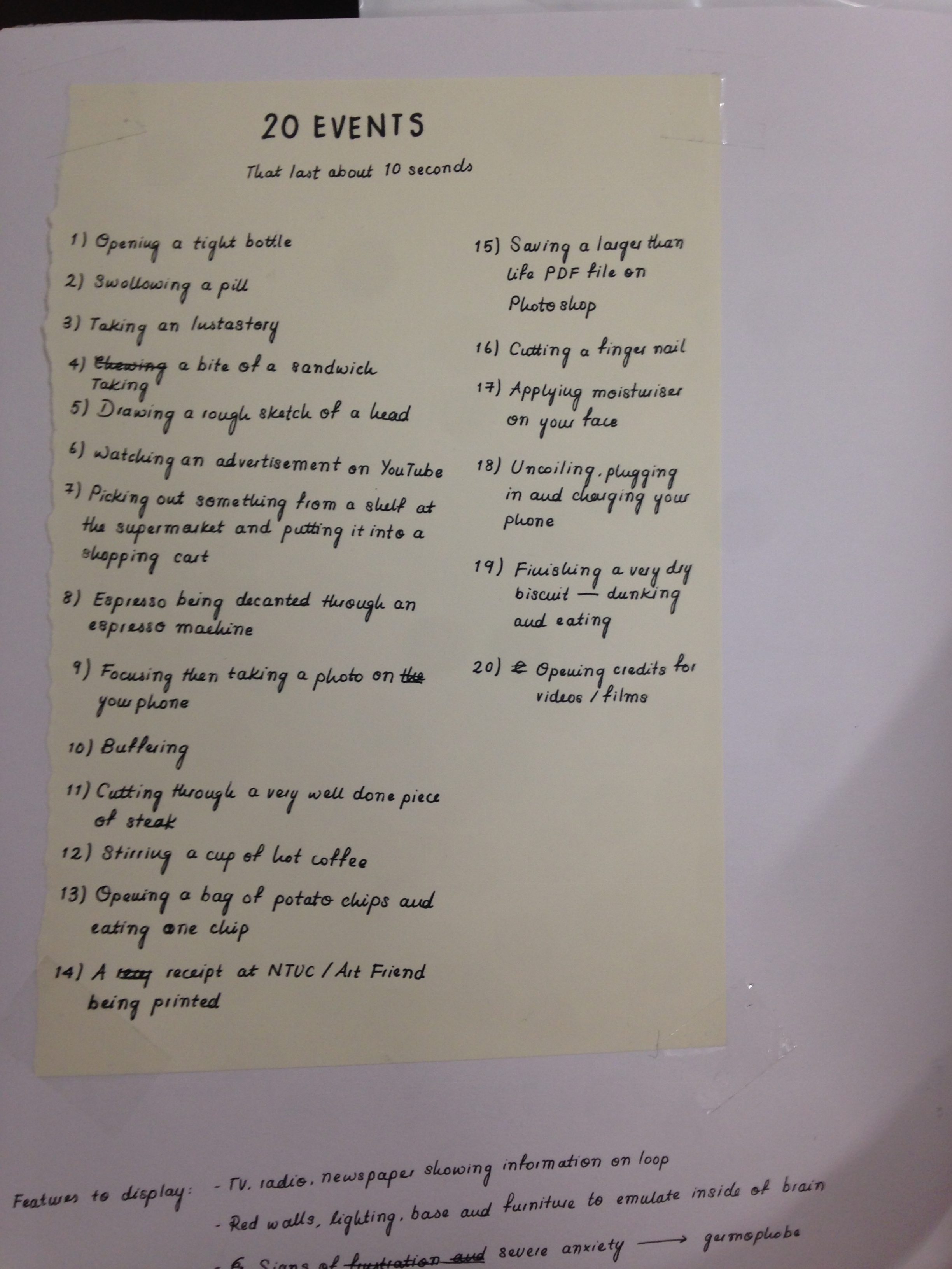
Challenges & Feedback
A challenge I faced in this project was the presentation set-up. Due to the lack in equipment and restraints, I was not able to have the video in the diorama and the audio on an automatic loop. As a result, I had to always remove the top of the diorama to replay the video when it stopped, as well as manually play the sound composition from the beginning when someone put on the headphones. This affected the way viewers perceived the installation. Due to the inconsistency in presenting the video and audio, a lot of viewers were confused and not too sure about what to expect. On the contrary, the confusion did complement the interior of the diorama quite aptly.
I also felt that I could have scaled the presentation of the diorama slightly better. The installation could have been placed at eye-level height for a better and more comfortable viewer experience. Furthermore, the peephole could have been positioned at a more suitable level as the current position of the peephole did not allow for viewers to view the whole room – other scaled pieces of furniture could not be seen (the beanbags and the circular rug).

